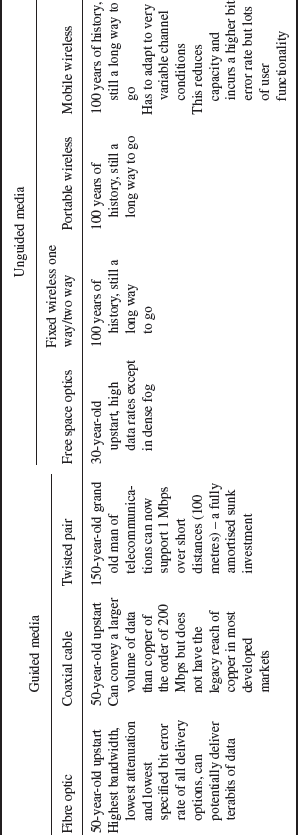2
Physical Layer Connectivity
2.1 Differentiating Guided and Unguided Media
This chapter explores the dynamics that determine the deployment economics of copper, cable, fibre and wireless networks both in terms of bandwidth efficiency and power efficiency and explores some of the metrics that are presently used for comparison and could potentially be used in the future, for example cost per bit, bits per Hz and joules per bit.
All of these physical layers use a combination of frequency or time multiplexing. Cable copper and wireless all use a combination of nonorthogonal or orthogonal frequency, phase or amplitude modulation. These techniques are also becoming, and will become more widely, applied in the optical domain.
Telecommunication delivery options can be divided into guided and unguided media. Guided media includes fibre optic, coaxial cable and copper or aluminium twisted pair. Unguided media include free-space optics, fixed wireless (one-way and two-way), portable wireless and mobile wireless.
A first-order summary of the available options and their comparative merits can be presented as shown in Table 2.1.
Table 2.1 Guided and unguided media

Self-evidently guided media cannot provide mobility in any meaningful sense of the word unless walking in a circle with a cable in your hand happens to be acceptable. What is immediately apparent is that all these delivery options ...

